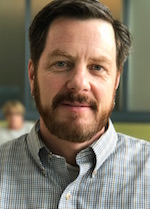Abstract:
In order to identify and fully understand the impacts of industrial emissions on climate and ozone loss, we must understand sources of natural variability in modulating long-term changes. Explosive volcanic eruptions can perturb levels of stratospheric aerosol, which can both cool the Earth’s surface and enhance stratospheric ozone loss on time scales of several years. A new generation of space-born and ground-based observations has highlighted the previously overlooked role of small-to-moderate volcanic eruptions in enhancing stratospheric aerosol. New capabilities of global chemistry-climate models to calculate stratospheric aerosol properties from volcanic emissions is providing new insights into the effects of such eruptions on reducing the rate of global warming as well as delaying the recovery of stratospheric ozone.
Calculations using a volcanic sulfur dioxide (SO2) emissions inventory in NCAR’s Whole Atmosphere Community Climate Model (WACCM) with detailed sulfur chemistry and a prognostic stratospheric aerosol scheme show that small-to-moderate eruptions have offset 30% of the warming from CO2 emissions since 2000. During the same era, model calculations show that eruptions have periodically expanded loss in the seasonal Antarctic ozone hole. Only by identifying and removing the impacts of such eruptions can we now conclude that stratospheric ozone recovery from anthropogenic halogens is currently emerging. The cooling effect of volcanic eruptions has inspired proposals to offset global warming via artificial enhancement of stratospheric aerosol. WACCM has been used to evaluate such geoengineering schemes, incorporating intelligent feedback algorithms to optimize multiple climate targets.
